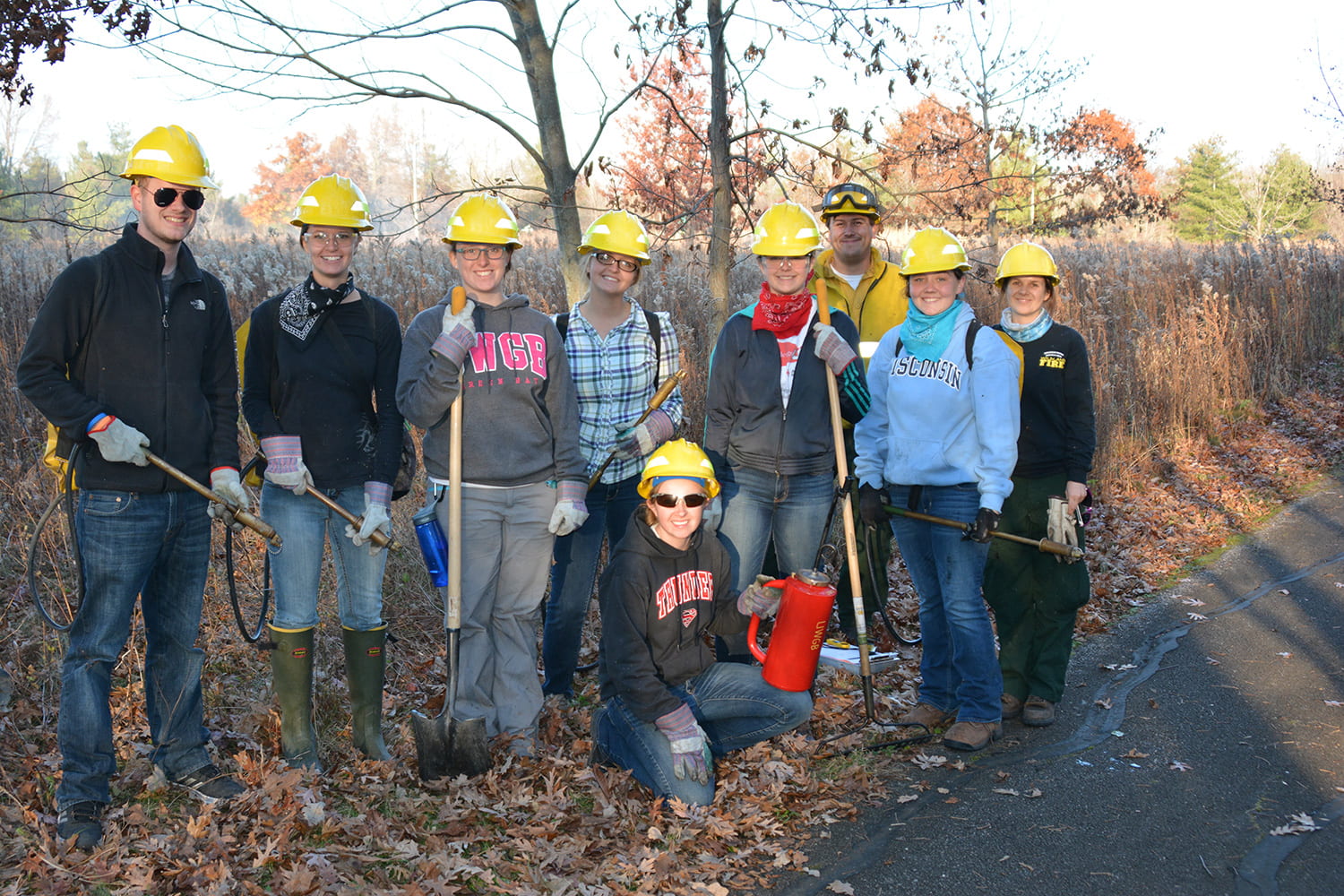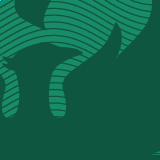Roots and Wings: 20 Years of Biodiversity
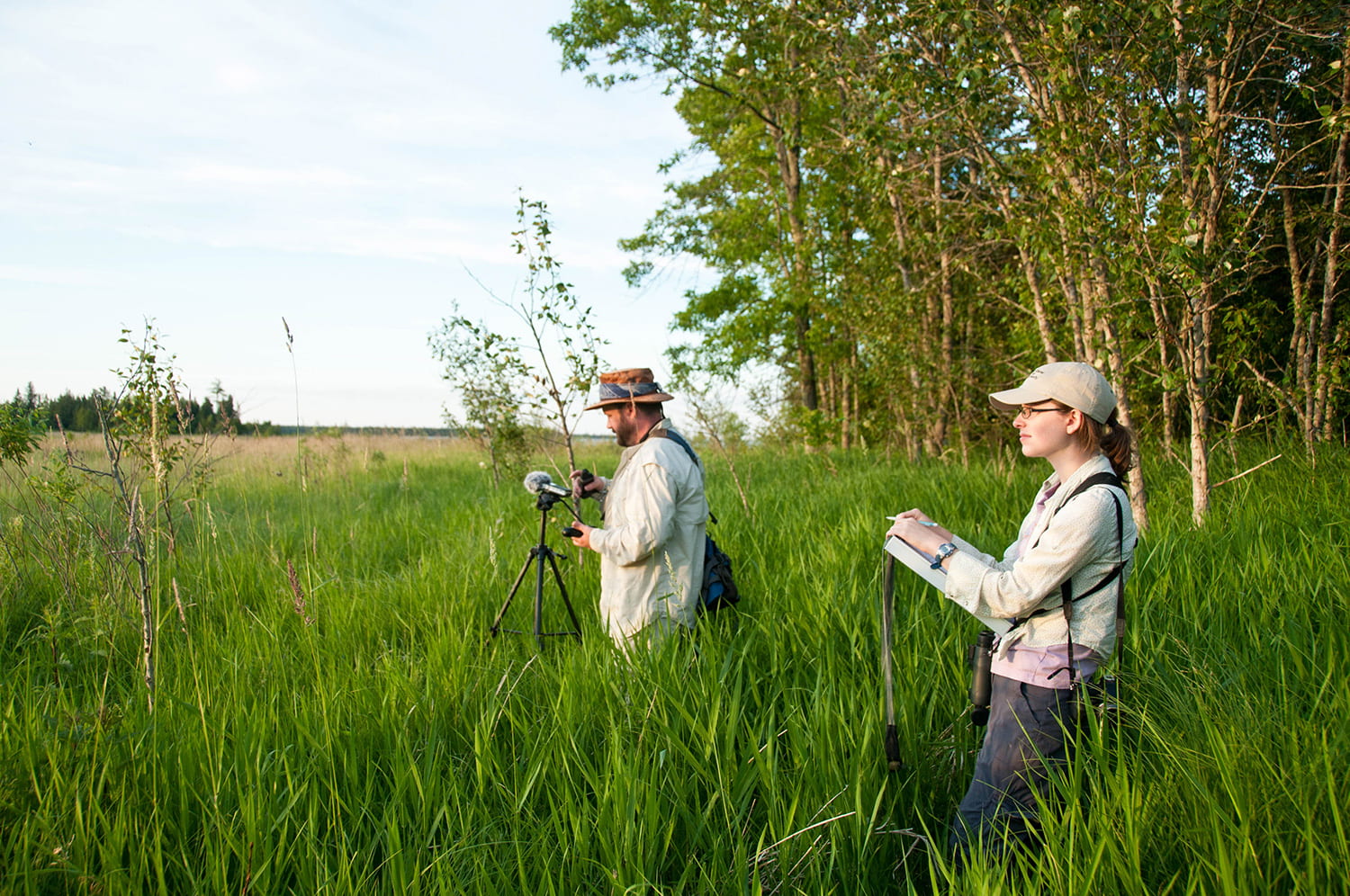
Two decades ago, a group of visionaries insisted that with the right resources and opportunities, UW-Green Bay could become a regional conservation leader. They were right. With a physical presence and intellectual capital, the University’s Cofrin Center for Biodiversity took flight, and this year friends are celebrating its tremendous progress and accomplishments.

Planting the seed
Visionaries for the biodiversity center included faculty members Paul Sager, Keith White, Bud Harris, and Bob Howe; staff members Les Raudenz, Gary Fewless, Tom Erdman, and Michael Van Lanen; philanthropist Dr. David A. Cofrin and the University’s founding Chancellor, Ed Weidner. The idea was supported by then-Chancellor Mark Perkins and Dean Carol Pollis.
The “Eco U movement” at UW-Green Bay goes back even further. With a strong leadership core during its early years, UW-Green Bay quickly became recognized for its environmental focus. In 1968, through a donation from The Nature Conservancy, the University secured its first off-campus natural area—the spectacular lake-front property of pioneer conservationist Emma Toft and family in Door County—who sought to preserve her family’s lake-front property as a natural area. Even earlier, the Cofrin family had created an endowment that enabled the University to develop a system of trails and plantings that would one day become the Cofrin Memorial Arboretum—a natural boundary of 290 acres encircling one of the Midwest’s most picturesque campuses.
The Cofrin Center for Biodiversity staff now manages about 1,600 acres across five natural areas in three counties. Recently, the University and its partners secured funding to add 73 acres to the Point Au Sable Nature Preserve, a peninsula just a few miles from campus, visited annually by more than 200 migratory bird species.
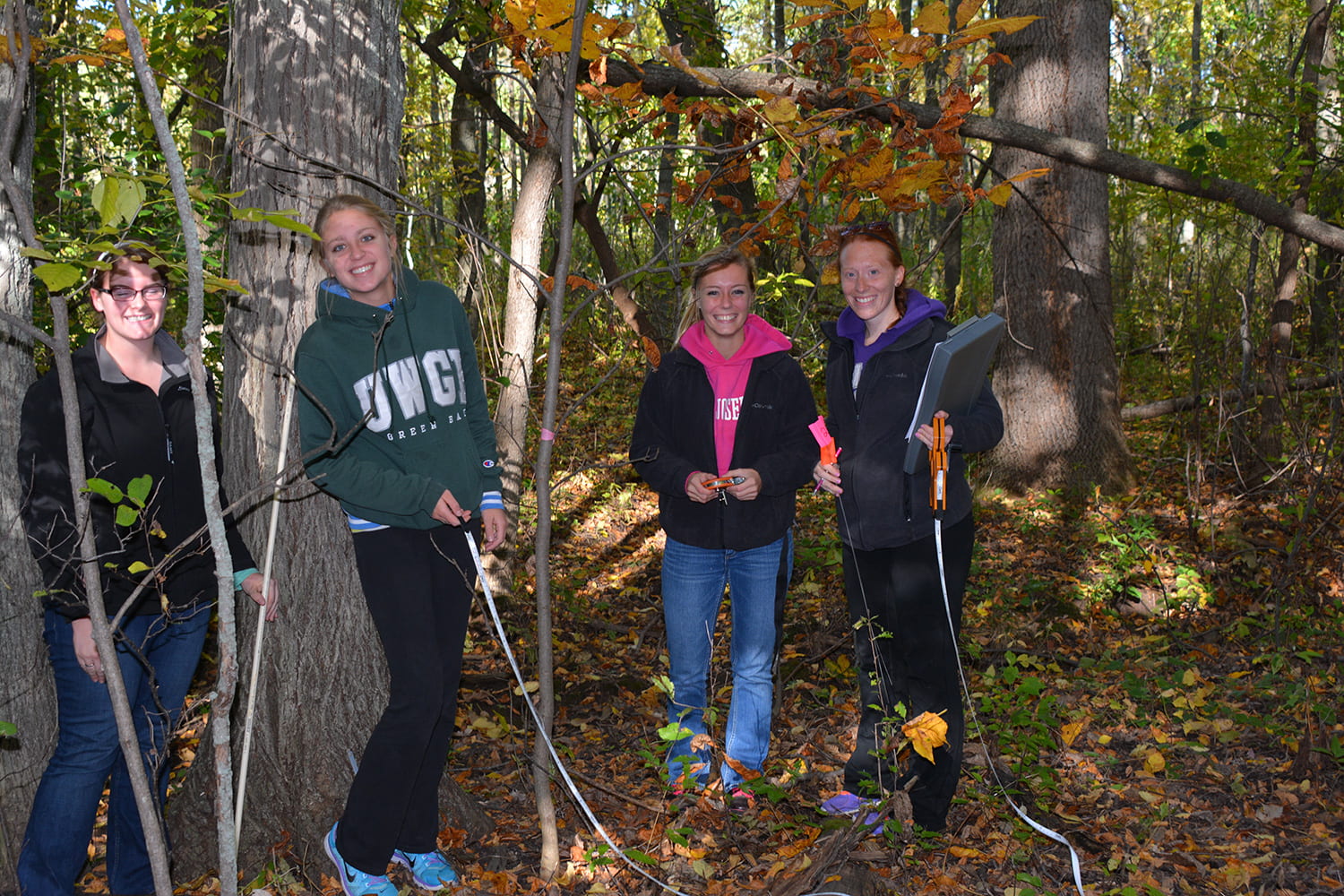
A budding concept
But the Center is far more than a land manager. While University officials were acquiring acreage for study and field work, UW-Green Bay undergraduates Tom Erdman and Gary Fewless were building collections. In the late 1960s Erdman began working with local ornithologist and collector, Carl Richter, facilitating the donation of a massive natural history collection of biological specimens that would become the Richter Museum of Natural History. Around the same time, Fewless began adding his own plant specimens to a small, existing teaching collection of pressed plants. By 1996, two small reconfigured classrooms would hold more than 40,000 animal specimens, hundreds of irreplaceable bird eggs and skins, and 20,000 scientific plant specimens.
As he watched the development of the arboretum and the various collections, Weidner’s personal friend, Dr. David A. Cofrin, son of Austin E. Cofrin (founder of Fort Howard Paper Company), sought to provide a headquarters for the Cofrin Memorial Arboretum; at the same time, the University was in dire need of more classroom space. Cofrin provided a sizeable gift that was combined with state funding to create a state-of-the-art green building, dedicated in 2001, and named for David’s wife, Mary Ann Cofrin.
While plans for the new building were being drawn up, several other pieces needed for the envisioned headquarters fell into place. Prof. Paul Sager described it all as “working out beautifully.” Natural and Applied Sciences program leaders, with support from Dean Carol Pollis, were able to create permanent positions for the curatorial positions (mentioned above). Pollis and Sager wrote the charter for the new campus center to serve the University by managing the natural areas, natural history, and plant collections and by supporting biodiversity research and education.
“MAC Hall,” as it is affectionately known today, would house new headquarters for the Richter Museum of Natural History and Gary A. Fewless Herbarium, along with University classrooms, labs and gathering spaces. In addition, Cofrin provided long-term support for the Center’s activities through his new philanthropic foundation‚ The 1923 Fund. The resulting Cofrin Center for Biodiversity was approved in summer 1999, with Professor Bob Howe named as director. So, while conservation had always been in the University’s DNA, the Center for Biodiversity made it official. Students, faculty researchers and community members were, and continue to be, the long-term beneficiaries.
Freedom to bloom
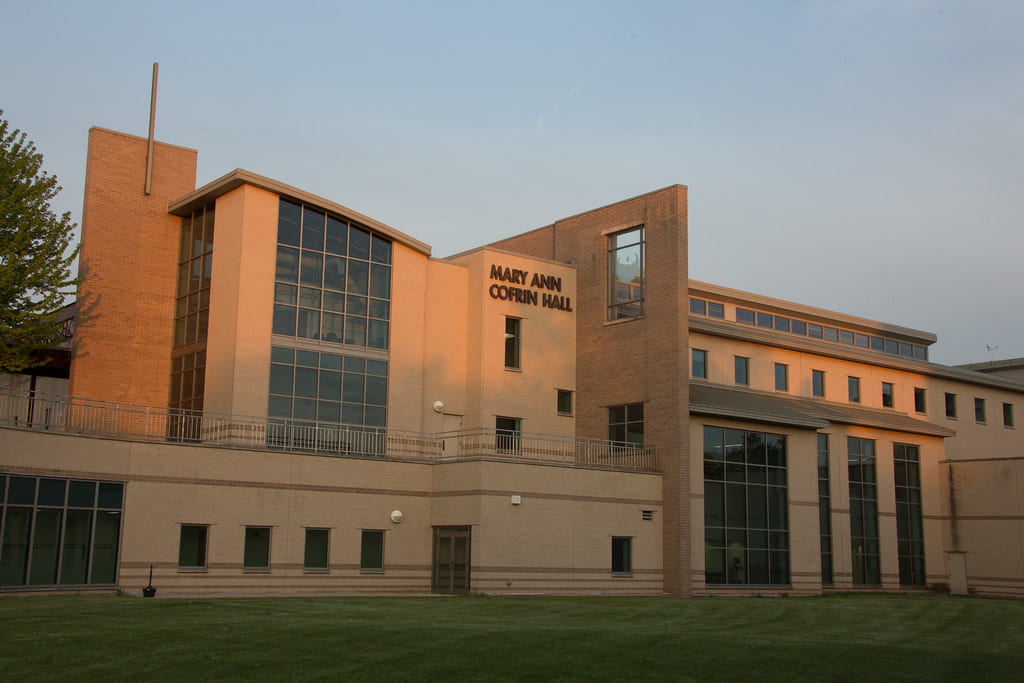
Mary Ann Cofrin Hall opened in 2001
Mary Ann Cofrin Hall opened in 2001 and Center faculty and staff moved into its new offices managed by administrative assistant Kimberlee Mckeefry. The collections were now accessible and organized instead of packed into a small room and were adjacent to a new classroom allowing specimens to be easily used for teaching. Faculty developed more field biology and taxonomy courses at UW Green Bay at a time when other universities were dropping their “ology” courses. The Cofrin Arboretum and the natural areas continued to important outdoor classrooms, allowing students to gain hands-on knowledge of field techniques. Thousands of students across the campus have benefited from Center resources in the last 20 years, whether it was access to binoculars for field trips, specimens for science or art courses, computers for research, or even data collected by previous students and archived at the Center.
If resources were the foundation of the Center, it is the students that provide the energy to drive the momentum. Students are integral to the research and restoration done and under the guidance of faculty and staff, crews of undergraduate and graduate student technicians to get the hard work done monitoring birds and frogs, removing invasive plants, and planting and restoring habitat. These opportunities are essential for students in an increasingly competitive job market. Director Bob explains: “Especially for science students, college is more than just attending classes and earning grades. In order to compete for the best jobs, students need to build a competitive resume. The Cofrin Center for Biodiversity helps students do that. During the past 20 years, we’ve provided opportunities for hundreds of students through our annual research grant program, student employment in the Richter Museum, Fewless Herbarium, and natural areas management, and engagement in faculty-guided research grants.”
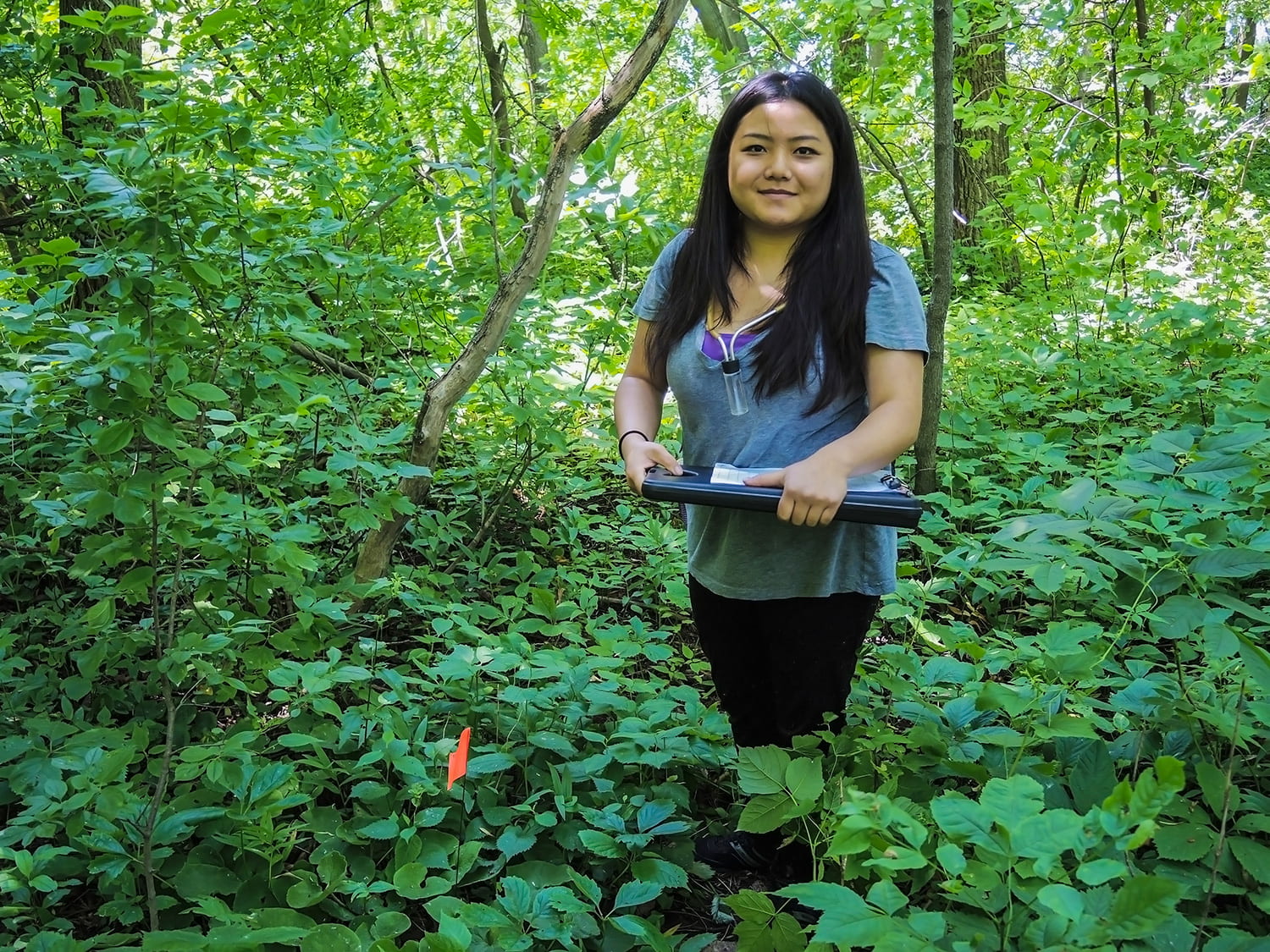
Additionally, the Cofrin Research program started in 1989 and managed by the Center allows students to take their own questions to the field to study plants and animals on the natural areas and provided students to share their results with their peers at an annual symposium. Since 1999, 131 students have conducted independent research projects, with several resulting in scientific publications.
A collaboration fostered by Dr. Cofrin in 2006 to link local students to educational and research opportunities with the Smithsonian’s Tropical Research Institute resulted in a highly successful research course coordinated between faculty at UW Green Bay and Saint Norbert College. More than 100 students have traveled to Panama to learn about tropical conservation first-hand and several have gone on to focus on conservation careers.
At the time of this writing (Summer 2019), sixty-six graduate students have been supported since 1999 and have been an integral part of the success of the Center, with graduate students taking leadership roles as teaching and research assistants, forming partnerships within the community, and running outreach programs. Further funding by the 1923 Fund created two biodiversity research assistantships.
Bruce Snyder (’02 Biology, ’04 ES&P), now an assistant professor of biology at Georgia College attributes his success to his experiences at the Center.
“The Cofrin Center for Biodiversity helped shaped my career in innumerable ways throughout my time at UW-Green Bay, including an early job on the arboretum, lunch seminars and discussions, and personal connections that helped me get into a PhD program,” he said. “The most crucial contribution to my development as a scientist was that the Cofrin Center for Biodiversity provided the impetus—and funding—for my first experience in undergraduate research through the Cofrin Research Grant program. This ultimately set me on the path to where I am today. As faculty, I have been able to influence ~150 undergraduate researchers through directing a REU program and mentoring in my own lab.”
Sager, who has been witness to the growth and transformation said Founding Chancellor Edward Weidner would be proud.
“Ed Wiedner would be really pleased to see how this has evolved,” said Sager. “He took great pride in the arboretum and the interdisciplinary focus of the program and the gathered resources that fostered ecological collaboration and partnerships at the University.”
Fertilization with collaboration
A perhaps unexpected but extremely important center to the Center became the big conference table in the office suite. Students, staff and faculty were able to easily meet and learn from each other. Whether it was student study groups or club meetings, the weekly “ecolunch” scientific paper discussion, or large meetings between local environmental agencies, there was always collaboration.
Under Director Howe’s direction the Center became sought out for expertise in ecological research, especially for ecological monitoring and restoration. Collaborative efforts with local conservation organizations and agencies resulted in more student powered research including bird monitoring in Wisconsin’s northern forests, wetland indicator species, restoration and invasive species control research, and most recently understanding and restoring ecological impairment in the Bay of Green Bay.
Collaborations with researchers working on a Smithsonian program focused on long term monitoring of forests began to expand globally. The Center, working with UW Green Bay faculty and partners in the National Forest Service created the Wabikon natural area, one of the first northern temperate forest plots in the United States. Student crews tag and measure thousands of trees, monitor seedlings and birds and mammals at the site.
New research generated through collaboration with local, regional, national, and international agencies and organizations, compounded by increased stress from invasive species in the natural areas, demanded more technical support, and with help from the 1923 Fund, the Center was able to hire a natural areas manager and data manager in 2010, greatly expanding opportunities for students to participate in conservation research.
Its impact is undeniable.
The Center has received more than 45 grants and gifts totaling $8,136,013 since its establishment and an additional $15,000,000 in multi-institutional projects in which faculty, staff, and students have participated. Research by Center-supported faculty, staff, and students has resulted in more than 70 peer-reviewed scientific papers, and more than 100 posters and presentations at scientific meetings.
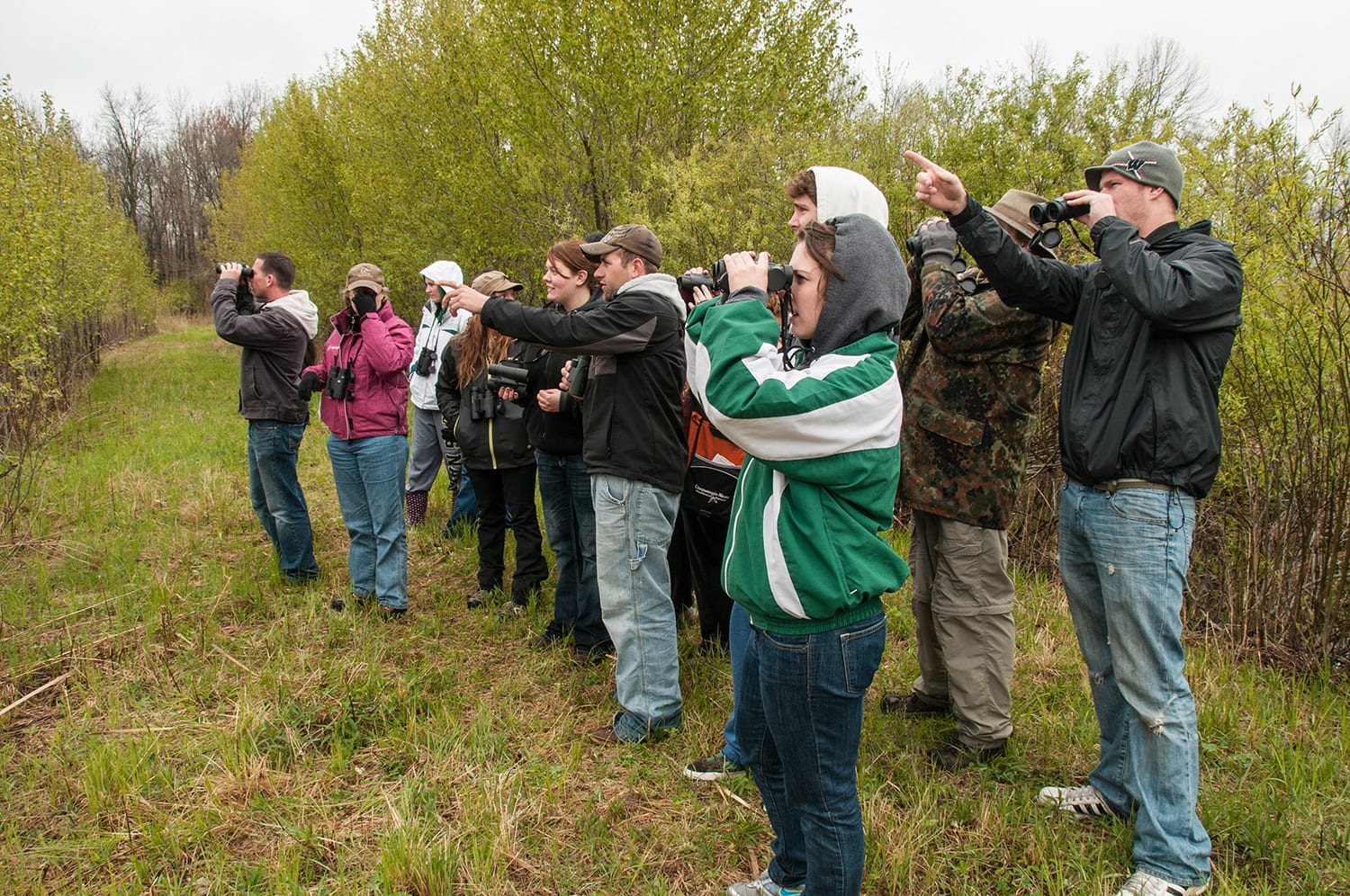
Unprecedented growth
Sager is thrilled with the success of the Center. “It’s everything we envisioned and we predicted that if we created a place centered on conservation education, management and research that it would succeed. It was the efficiency that was gained by consolidation, and creating a space for conservation to happen that gave us momentum to go on. And that momentum is still gaining speed.”
Director Bob Howe is continuing to build on the work he has fostered over the past 20 years by strengthening existing partnerships, land management, and restoration. He argues that the importance of the land to preserving biodiversity has historically not been appreciated, but as we learn more, we are realizing how precious those lands are. The Center is already looking forward partnering with organizations to improve and continue to restore our natural areas. Improvements to the Arboretum trails will begin thanks to generous support from the community. The Point Au Sable Nature Preserve will be expanded by the Wequiock Creek Coastal Wetlands recently acquired by the Northeast Wisconsin Land Trust. Center faculty are seeking to use new technologies like Environmental DNA to study biodiversity. But the one thing will not change is the Center’s reliance on quality education and strong collaboration.
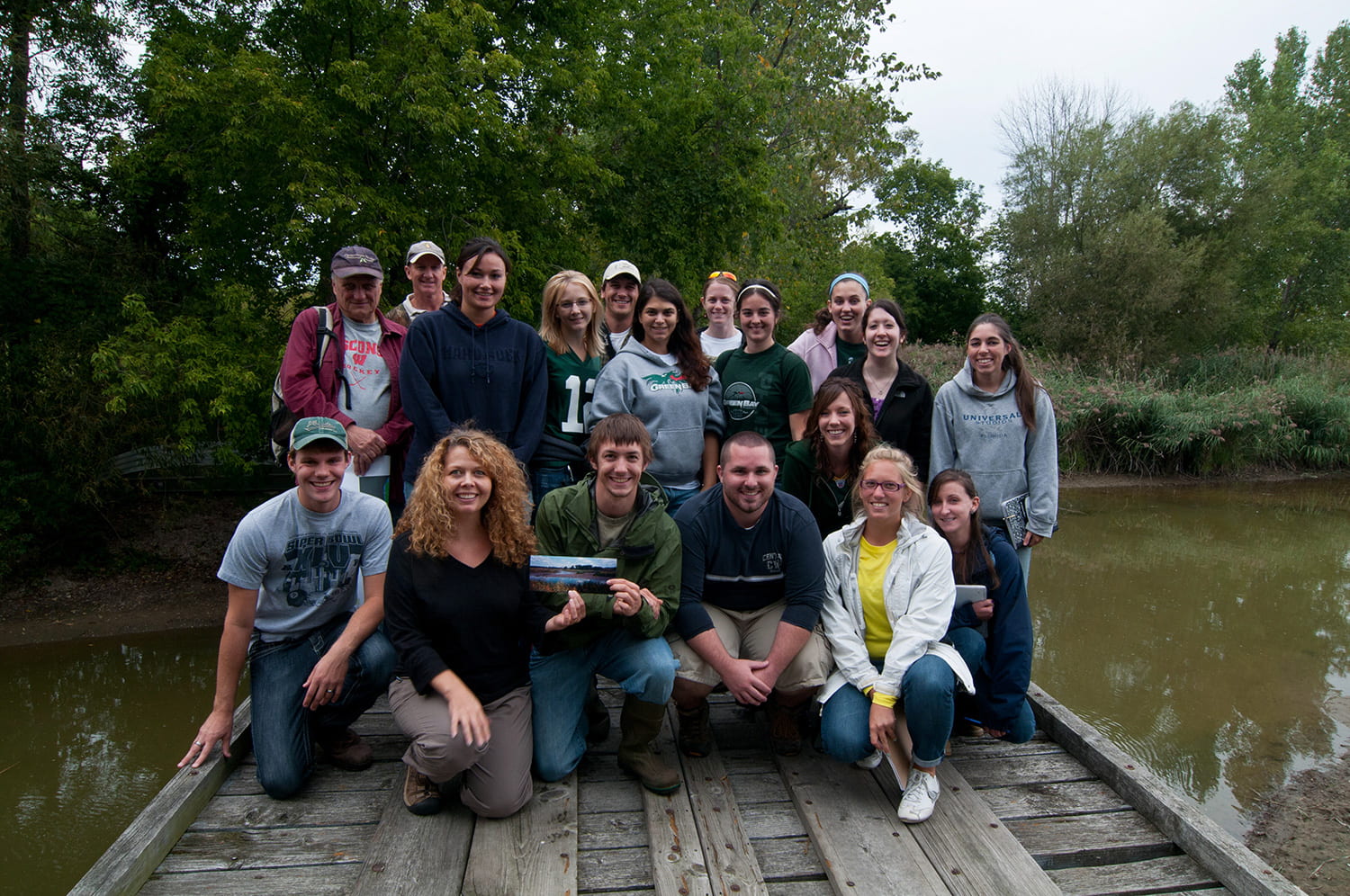
Recipe for success
Howe describes it as “A recipe for student success really works.” And the result is now often momentum driven by new partners who are former students. Howe described a recent meeting at the big conference table at the Center.
“I participated in a conservation planning meeting for lower Green Bay, attended by 11 professionals representing a private environmental consulting company, National Audubon Society, U.S. Fish and Wildlife Service, U.S. Environmental Protection Agency, Wisconsin DNR, UW-Green Bay, and Ducks Unlimited. Amazingly, nine of the 11 participants were UW-Green Bay graduates, and all nine of these had previously been involved in a project or field course connected with the Biodiversity Center. The hands-on opportunities that we provide not only help students obtain good jobs, they help students become effective leaders.”
“It’s everything we envisioned…” Sager says. “It was the efficiency that was gained by consolidation of all the resources and collections, and creating a space for conservation to happen that gave us momentum to build on. And that momentum is still gaining speed…”
– Story by Vicki Medland
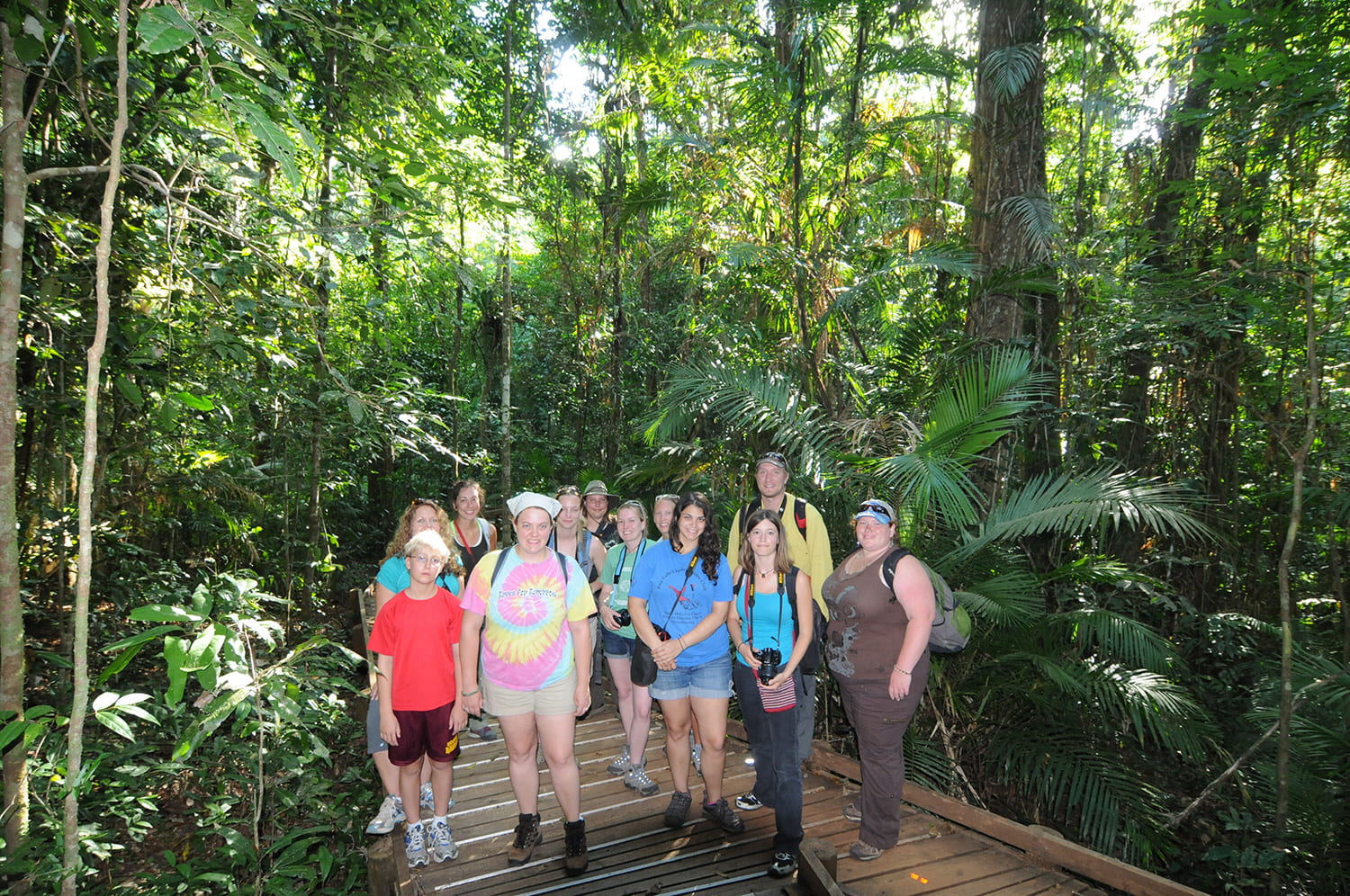
Cofrin Center for Biodiversity Mission Statement
The primary purpose of the Cofrin Center for Biodiversity is to promote education, research, and community services that contribute to conservation of the western Great Lakes fauna and flora.
Center for Biodiversity 20th Anniversary Events
Watch for these Cofrin Center for Biodiversity 20th Anniversary events. More events will be added including tours of the museum and hikes at the many natural areas. Look for a winter 2020 dedication event. Keep current of anniversary events at www.uwgb.edu/biodiversity/anniversary/.
| Month | Event |
|---|---|
| June 2019 | Door Peninsula Coastal Wetlands Bioblitz |
| September 2019 | “Museum of Natural Inspiration: Artists Explore the Richter Collection” Art Show Prairie Festival |
| Art Bomb in Arboretum | |
| October 2019 | Cofrin Arboretum Anniversary Commemoration |
| January 2020 | Panama Field Course March |
| Cofrin Research Symposium | |
| April 2020 | Earth Caretaker Award in partnership with the Environmental Management Business Institute (EMBI) |
| Academic Excellence Symposium | |
| May 2020 | Peregrine chick banding |
| Festival of Nature |


